In 1815, Sir David Brewster began work that led to the invention of the kaleidoscope. At that time, he was experimenting with light polarization. The kaleidoscope was not patented until two years later. His first design was a tube with a pair of mirrors at one end, a pair of translucent disks at the other, and beads between the two.
The kaleidoscope demonstrates the dynamics of light and color, which are used in materials research at the MagLab. Scientists learn more about the intrinsic properties of materials by shining light on them. Looking at which kinds of light are absorbed or reflected at different angles gives researchers insight into the fundamental electronic structure of matter.
How Does a Kaleidoscope Work?
A kaleidoscope works by reflecting objects multiple times. Light passes through the colored paper or beads and bounces around the reflective surface inside the scope, creating colorful repeating symmetrical patterns.
As you turn the kaleidoscope, it moves the objects inside which changes the pattern.
How to use a Kaleidoscope as a Geometry project
A kaleidoscope is an ideal material to use for a geometry project since you can study, compare, and discuss a number of concepts:
Mirror Characteristics - The number of mirrors and their shapes will affect the kaleidoscope results. Create several different kaleidoscopes with varying mirror designs and compare the visual effects.
Mirror Angles – Changing the angle of the mirrors affects the patterns you can see inside the kaleidoscope. For instance, a two-mirror kaleidoscope with mirrors positioned in a V-shape with a 45-degree angle will result in eight reflections, or a four-point star. If you create another kaleidoscope with two mirrors situated at 90 degrees, four images or a two-pointed star will appear. A 30-degree position will create 12 images, or a six-pointed star. You can also change and compare varying angles with three mirror kaleidoscopes.
Symmetry - A kaleidoscope creates symmetrical patterns from various asymmetrical objects. Look through the kaleidoscope and identify the symmetrical patterns that it produces. Follow the lines in the kaleidoscope's reflection to verify the symmetrical shapes. You can observe and compare the visual results of two or more kaleidoscopes.
Reflection Angles - A kaleidoscope's reflection is a colorful way to test your ability to spot geometric angles. Add special marks or even paper clips and stickers to create identifiable areas on your coffee filter. Identify the various types of angles that you observe in each kaleidoscope, such as obtuse, acute, right, isosceles, equilateral, or scalene triangles.
What you’ll need:
- A cardboard tube such as a toilet paper roll or a paper towel roll cut in half.
- Decoration items: colored paper, scrapbook paper, washi tape or stickers
- Clear tape
- Black cardstock paper
- Transparent sheet
- Coffee filter
- Pipe Cleaners
- Colored markers
What you'll do:
1. Decorate the cardboard tube
2. Cut both the transparent paper and black cardstock paper into rectangles measuring 10.5cm long and 9.7cm wide.
(This size may need to adjust based on the width and length of your cardboard tube.)
3. Place the transparent paper on top of the black cardstock to create the mirror.
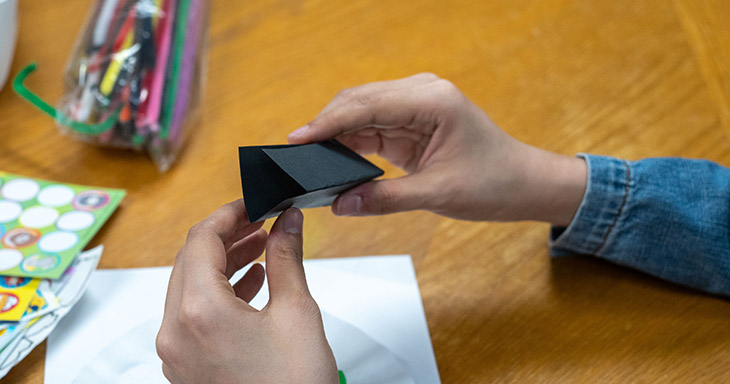
4. Keeping them together, fold the two sheets in thirds.
5. Bring the outside thirds together and tape them, forming a triangular shaped tube, with the black paper on the outside and the transparent paper on the inside.
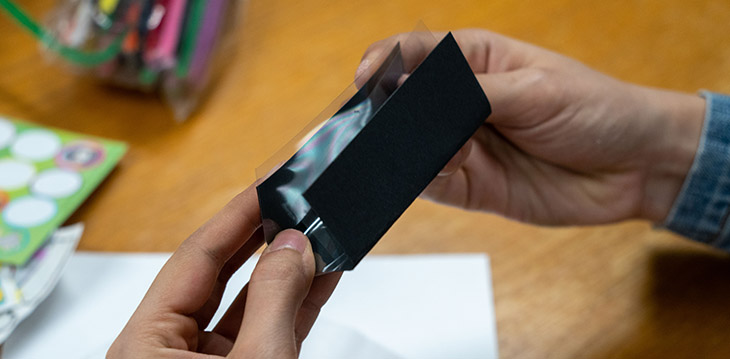
6. Insert this triangular tube into the decorated round cardboard tube.
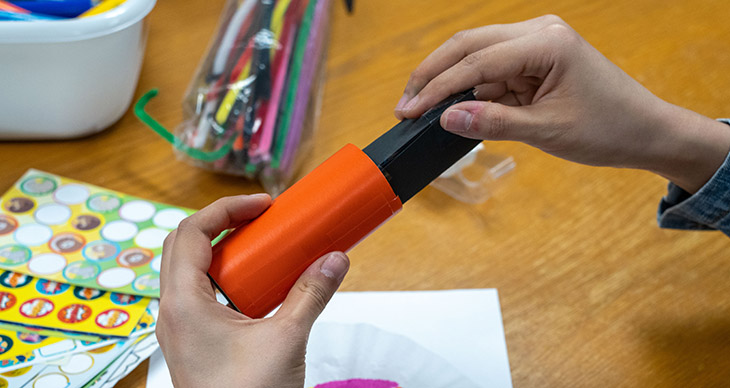
7. Color the coffee filter with geometric shapes. See the examples below or create your own designs.
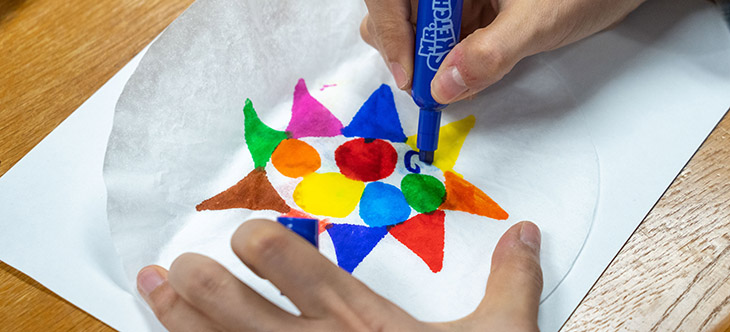
8. Poke a hole in the center of the filter, insert the pipe cleaner.
9. Make a loop in the pipe cleaner to hold the filter in place.
10. Tape the pipe cleaner to the side of the cardboard tube
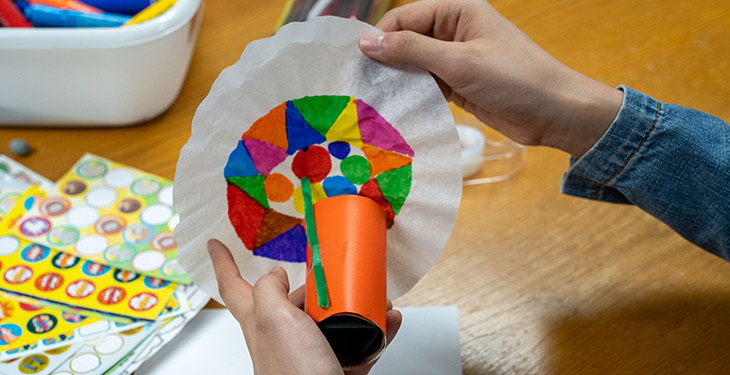
11. Turn the coffee filter with your hand while you look into your kaleidoscope to see the reflections created by your design.
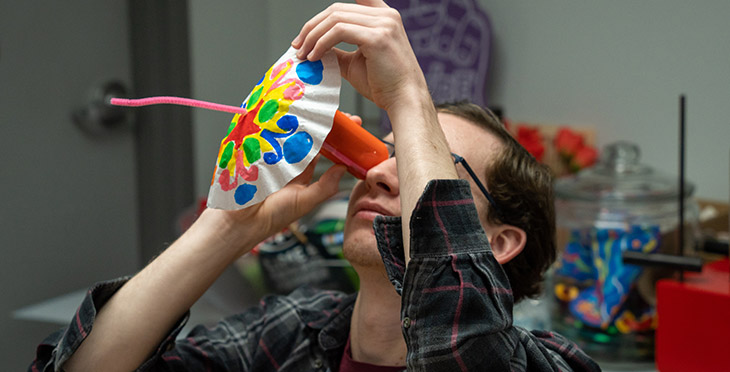
Make more patterns on other coffee filters to experiment with their reflections.
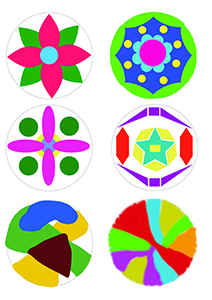
Example of kaleidoscope patterns - View larger image
Did you know?
- The Kaatskill Kaleidoscope is the world's largest, measuring 56 feet in height. It is housed in a converted grain silo in Mount Tremper, New York. The kaleidoscope, which opened in 1996, was designed by 1960s psychedelic artist Isaac Abrams and his son Raphael. It cost $250,000 to build.
- The origin of the word kaleidoscope comes from the Greek words kalos, eidos, and skopios, which translate to beautiful shape or form.